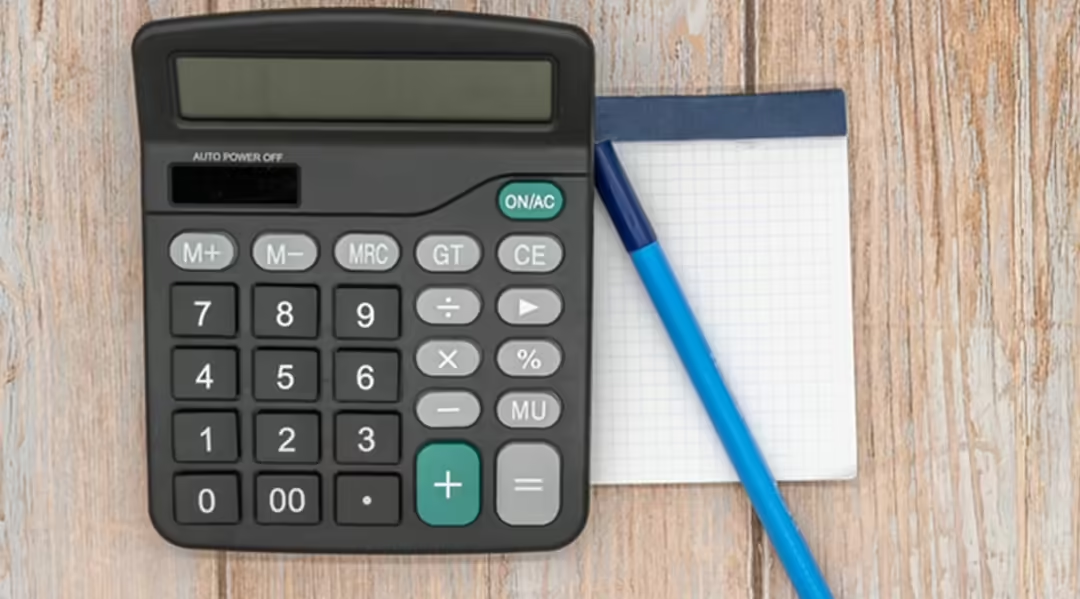
Last week we went back to basics by explaining how the assets test works.
This week we share the ‘second-part’ of this important retirement income update – an explanation of the way the income test is used to assess Age Pension eligibility.
What is the income test?
The income test is one half of the means test for the Age Pension. Applicants must pass both parts of the means test, i.e. both the income and the assets test. If either one of these aspects – income or assets – results in a lower Age Pension entitlement, then that is the test which will determine how much you will be paid.
What does this mean?
Let’s say, under the income test, you qualify for a modest part-Age Pension payment of $200 per fortnight (plus supplements).
But using the assets test, you qualify for payments of $292 per fortnight (plus supplements). Your actual Age Pension will be paid at the lower rate of $200, based upon the income test results.
How does Centrelink define income?
Centrelink considers your income to come in from a few different sources, including the following:
Actual income
- Wages or salary earnings
- Rental income
- Sole trader or partnership income
- Dividends or distributions from private trusts or private companies
- Overseas earnings (this includes non-Australian pensions)
Deemed income*
- *Financial investments (including shares, term deposits, managed funds)
- *Income on super fund balances
- *Income stream earnings (often from account-based pensions)
Income is ‘deemed’ by applying the current Centrelink deeming rates. These rates are 0.25% on financial assets up to $62,600 (for singles), $103,800 (for couples) and 2.25% for financial assets above these amounts.
You may actually earn more or less than this deemed amount. At the moment this calculation is advantageous for retirees as they are likely to be earning much more than 2.25% – perhaps 5% or higher on fixed term bank deposits and higher again on super fund returns. But that is of no concern to Centrelink, it will assess you on the official deemed rates which are set by the relevant government minister and in place until 30 June 2025.
What are the income limits?
To be eligible for a full Age Pension:
- Singles are entitled to a full Age Pension if their income is equal to or less than $212 per fortnight or $5512 per year
- Couples are entitled to a full Age Pension if their income is equal to or less than $372 per fortnight or $9672 per year
Part-Age Pensions
For every $1 your income is over these limits your pension will reduce by $0.50 (combined amount for a couple) until it cuts out.
Cut off points – or upper income limits
Singles will no longer receive any pension entitlements if their income exceeds $2500 per fortnight, or $65,020.80 per year
Couples will no longer receive any pension entitlements if their income exceeds $3822 per fortnight, or $99,382.40 per year.
How is total income calculated when including the Work Bonus?
The Work Bonus credit can be complicated to apply because it assumes you earn wages at a steady rate across the year, which is not true in every case. Combining the income which is deemed with non-deemed income, and then applying the Work Bonus can seem tricky. Steven Sadler from our Customer Services Team spells out how this works:
How much can singles earn?
Q. How much can a single full Age Pensioner earn (ALL UP) per annum before moving to a part-Age Pension?
In the first year a single can earn up to $17,312:
- Firstly, there is an income-free threshold for the Age Pension. This is $212 per fortnight or $5512.
- Because you are eligible for the Age Pension you are allowed a Work Bonus credit of $300 per fortnight or $7800 across the year.
- And then there is the bonus $4000.
HOWEVER from Year Two onward, it is only $13,312 because you only get the $4000 bonus once. After that has been used, you are only entitled to $300 per fortnight, which is $7,800 per year (plus the above income-free amount of $5512).
What about couples?
Q. How much can a couple who are full Age Pensioners earn (ALL UP) per annum before moving to a part Age Pension?
In the first year a couple (presuming both are Age Pension age and earning income) can earn $33,272:
- Couples have a higher income-free threshold of $372 per fortnight or $9,672 combined
- Presuming both are eligible for the Age Pension then you are each allowed a Work Bonus credit of $300 per fortnight or $7800 across the year.
- And then there is the bonus $4,000 each.
Find out more details on the Work Bonus.
Three mistakes to avoid
Again we checked in with the Retirement Essentials advisers and Customer Services Team to discover the most common ‘rookie errors’ when it comes to the income test. Three mistakes stood out in particular:
- Thinking that income only relates to employment earnings and forgetting to factor in deemed income on assets.
- Assuming that taxable income with the Australian Tax Office is the amount that Centrelink will use for their assessment. This often happens with people with rental income that is heavily offset under ATO rules but not nearly as generously treated by Centrelink.
- Believing that what you draw from your Account-Based Pension is assessable income, rather than understanding that deeming is applied to the balance of your account. This means if you draw down more or less, it has no impact whatsoever on your overall entitlement.
There is a lot to take in when trying to understand the income and assets tests. Retirement Essentials can make this a lot easier with the following support services:
- The free Age Pension Entitlement Calculator which applies all of the above rules on your behalf so you can quickly work through your potential eligibility with both income and assets tests factored in.
- Adviser consultations to assist you to maximise your entitlements
- Retirement forecasting consultations which share scenarios of the way your retirement savings can be made to last across your retirement journey.
We’d love to work with you to help you achieve your optimum financial outcomes as well as financial peace of mind.
Are there any aspects of income that still concern you?
Please let us know if any points need more explanation?






My income includes a car allowance of 98 cents per kilometre. 88 cents of that is non taxable. I travel to a number of stores within my regions so this can total up to 5 or 6 thousand dollars over the 12 months. Is this taken into account for the income test. I am casual and am looking at reducing hours worked but I need to find the correct balance. I am 67 years old in 2 weeks so I am age eligible.
thanks.
Hi Steve, great name by the way, Centrelink assess your gross income not taxable income so yes it will be included in their assessment.
What is the limit for you can have in your bank account after you have down sized in retirement and go to rental.
Hi Rob, the limit is on your total asset value, meaning superannuation, cars/bokes/boats/trailers, shares, and also money in the bank. Not just money in the bank on it’s own. CLICK HERE to see the asset thresholds.
Good explanations especially how the Work Bonus is applied. The Centrelink website also states that the income cut off point may be higher for people getting rent assistance. How does this work please?
Hi Lynn, I think there may be a misunderstanding as I am confident that the income threshold only varies based on whether you are single/couple. Home owner vs renter does not impact the income threshold.
I notice that income is deemed on the Super fund balance and also on income pension account earnings. If the income account is created from the Super balance, how does this work?
Hi Robyn, Centrelink only apply their deeming process to the balance of your superannuation pension account. They do not then apply it to the regular payments you receive also so thankfully there is no double dipping.
How is defined benefit assessed by Centrelink
Hi Greg, Defined Benefits are assessed as income based on the gross amount you receive.
For a “couple”, if one has reached retirement age but the other hasn’t, is the income of the non-retirement age person taken into account in assessing the income of the retirement age person?
Hi Paul, you are 100% correct, the younger partner’s income (and assets) still form part of the older partner’s assessment.
My wife and I inherited just over $1million when my wife’s mother passed away last year.
We do not have any other income other than my wife’s invested superannuation which is currently around $150,000.
We have invested most of the money and have also spent some on necessary maintenance on the house, etc. We currently have just under the $1million.
Can you tell me when we will be able to again access pension payments?
Hi Gerald, the easiest way to check your eligibility is via our free, online calculator HERE.
If I am working as a sole trader with a private practice, earning varying amounts each fortnight, do I have to declare fortnightly earnings?
Or do wait until tax time for everything to be adjusted – and potentially receive a bill from Centrelink for being overpaid.
Hi Phillipa, when you are self-employed you are not forced to declare fortnightly earnings like a standard employee would be. As you pointed out though waiting until tax time could result in over or under payments. If your pay fluctuates then you may wish to provide Centrelink with a Profit & Loss statement periodically throughout the year so they can more regularly update your payments based on the latest figures rather then waiting a whole year.
Can you clarify is superannuation considered an asset when calculating whether I am entitled to a pension, in part?
Hi Aysen, yes superannuation is counted as an asset.
if I currently have $725000 in my self managed super fund and receive dividends under the $65000 threshold.and have a leasehold lifestyle property which i don’t pay rates, can I apply for pension?
I would get the health card but I have different streams in my super fund and it gets complex.
happy to pay for your help.
Hi Julie, based on the numbers you mentioned it sounds like you would be eligible. I’d recommend booking in a Phone Application (HERE) so that we can properly discuss your situation and get the claim processed at the same time.
My wife, who is 58, is still working while I’m 69 and fully retired. None of the examples mention this situation when discussing asset and income limits unless that means I apply as a single pensioner which I don’t believe is the case.
Advice please.
Hi Matt, even if your partner is under Age Pension age you are still assessed as a couple and as such the couples’ thresholds are the ones applicable.
as far as work bonus is concerned is this only applied to earned income, or would it be applied to total income i.e. income which is including deemed income from financial assets, and foreign pension
Hi Edith, you are correct. The work bonus only offsets employment income. Deemed income, foreign pensions, rental income etc. cannot be offset by the work bonus.
Both my Husband and myself are working past retirement age by 10 years.
I believe that if you are working and saving the Government from paying the pension all these years that we should be entitled to Concession Cards.
Hi Pat,
I am in total agreement.
Hi Steve, I am 59 & not working, my husband is 66 & still working with a gross wage of $110,000.00 ( possible bonuses). I would like confirmation on what concessions either of us are entitled to if any, & to understand if my husband stops work how much pension he is entitled to fortnightly. Between us we have less than $200,000.00 in super, we own our home no mortgage & have no investments & maybe $120000. in assets. Any information is appreciated. We live in QLD.
Hi Pia, given your ages, Age Pension is still a few months off maybe more so I’d recommend booking in an entitlements consultation where we can discuss your situation and let you know your options/what Age Pension to expect when the time comes. CLICK HERE to make a booking.
Hi, I can start the process for a age pension in April 2025.
Do you charge ongoing fees after the initial fees for being a nominee in helping with the process of of applying for the age pension.
Regards
Hi Anthony, we charge an upfront fee for help with applying for the Age Pension but that one fee covers us preparing and lodging your claim and then seeing it through to approval. We have an optional service where you would pay a separate, once a year, fee to keep us on board as your nominee post-approval if you would like ongoing support but if you just want help with getting the claim approved then you just pay the one amount.
Hi Steven,
Could you please give more details on this service. What exactly does it entail?
“We have an optional service where you would pay a separate, once a year, fee to keep us on board as your nominee post-approval if you would like ongoing support”
Thanks
Hi Susan, thank you for your interest, we have sent you an email outlining the cost and what the service entails along with instructions on how to proceed should you choose to.
Thanks Steven, is that per couple or a single rate?
Cheers
Hi Susan, the one fee covers both of you 🙂
Hi Steven
Can you please send me a email with cost and process to be a nominee for when I apply for pension in the next 18 months
Thanks for your interest Neil, I’ve emailed you an overview of our services and fees.
How is foreign pension assessed in the income test please? Is it just simply added to the income?
Hi Bozena, yes foreign pensions are assessed as income on top of any other income received.
Rental of part of the family home is different. Can you please explain the difference ? Centrelink told me that the income from our renting out part of our house is treated differently and has a “dollar for dollar” impact on my pension. I just don’t understand the formula they use. I have an aged pension, wife is far too young for that, she is retired as well. The rent we get is $450 per week, my wife and I each own 1/2 of the house. Assets don’t come anywhere near the limits to impact my pension. My pension is reduced about $4,000 from a full pension. Many thank this is a complex issue to understand.
Hi Robert, thanks for reaching out. Given the complexities involved it is difficult to clarify in this forum as we’d need to know a few extra details. I’d recommend booking a consultation with one of our specialists (HERE) so we can properly clarify everything for you.
Hi, I am just about to start a single age pension and wondering whether the income amount i will be allowed would be based on a fortnightly income or a annual income. Iam a seasonal worker and only work as a casual worker fo 6 months of the year. The fortnightly income when working varies dependent on hours worked and at times can be $1100 . Will i loose the pension payment for these fortnights or is it averaged out pa. Annual income approx $15,000.
Hi Gary, when doing seasonal work the best thing to do is let Centrelink know when it starts so they can turn fortnightly reporting on, then declare each fortnight’s earnings, and then once finished let Centrelink know so they can turn it off. For the fortnights where you exceed the threshold your pension would be reduced or potentially $0 but then the next fortnight when your income reduces the Age Pension would increase again.
Hi, my husband has all his superannuation in Retirement phase as an income stream. He has held off applying for an Australian Age Pension as I have, until recently, still been employed. Now that I’ve retired, he applied for the Age Pension. We fully disclosed all assets in his application, including my superannuation which I have not converted to an income stream product and is therefore in Accumulation phase.
The ATO has not included my Accumulation phase superannuation in the assets or income assessment. Is this correct? If I make adhoc Retirement withdrawals from my Accumulation phase superannuation will this affect my husband’s Pension assessment?
Hi Jacqueline, if you are under Age Pension age (67) then your accumulation account will be exempt from assessment, even if you take commutations out of it. Once you either turn 67 or convert it to a pension like your husband’s then it will become assessable. SO if you are already 67 then it is already assessable and you should declare changes in the balance to Centrelink when you take funds out.
Thank you Steven, your reply confirms my own research, so great to have confirmation of that. I am 61, so 6 years off Age Pension age. It’s been handy to understand that keeping my super in an accumulation account keeps it exempt from assessment.
G’day Steve I am 61 and still working at this stage. I have been investigating my retirement strategy and would like to find out about some income sources and if they are included as to if it is deemed assessable. I currently receive a Veteran affairs DSP pension as well as DFRDB deferred benefits pension. Can you let me know how they are both treated?
Hi Steve, great name by the way, generally speaking DSP and DFRDB are assessed as income based on the gross amount received. There are some deductions allowed but it is tricky to explain so if you’d like to know how it would work for you specifically you’d need to book a consultation with one of our specialists HERE.
Hi Steve, I am a married man 71 with a 70 year old wife. I have a defined benefits SSS income stream (indexed to CPI). Further to this IMO more than likely possibly being somewhat over the limit re assets (at this stage). Hence, as yet I have not applied for the aged pension. I have 2 questions which i request assistance with.
Q1. If I sell my second house (jointly owned with my wife) that we have held since 1993 but not rented for income for many years now. Purchased for $120,000 and now worth $620,00. What are the ramifications re the assets test and subsequent capital gains tax liability in relation to the said aged pension application assets and income tests?
Q2. Further to this (and another reason why I have not applied for aged pension. My principle residence is located on a semi rural parcel of land of approximately 8 acres about 25 miles out of Sydney which I understand creates a problem when being assessed for an aged pension application as it is over the maximum 5 acres allowable. Given that this parcel of land is not able to be sub divided due to being designated as environmentally sensitive and consisting of mostly cliff faces, rocky gullies and natural watercourses and having only about 2 acres of semi arable type land. Does this excess of 3 acres rule me out of applying for the aged pension and if not how is this extra 3 acres assessed for value re the assets test given it is designated environmentally sensitive land which you can not either sub divide or do any development on?
Hi Terry, thanks for reaching out for further assistance. We can definitely help clarifying those two issues but there are a few ifs, buts and maybes involved so it would be difficult to do in this forum. Please book a consultation with one of our specialists (HERE) and we’ll be happy to help.